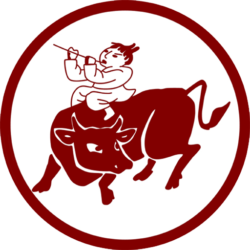by Simon Grisdale
In 2003 I seriously injured my back in a diving accident, which damaged my spinal cord in the T12 L1 region, and left me in a wheelchair. Since I became paralysed from the waist down, I had to start using my upper body for everything. I twist my upper body more to reach things with my arms, transfer my body weight when shifting from my wheelchair to another chair, lift my wheelchair into the passenger seat in the car, and generally use and stretch my muscles in my upper body a lot more than I had done previously. Because I was always focused on using my upper body and was sitting in the wheelchair, I forgot about my legs. Due to the loss of movement, I had lost a lot of muscle in my legs and bottom, and sensation too was heavily affected, replaced by numbness and constant feeling of pins and needles. They were just limbs hanging off the end of my body, something which, I thought, I just had to grin and bear.
I came across Movement Shiatsu when I was looking for a place to have a massage.
In my first session with Jonathan, he explained to me that he did not know what the possibilities were, but that we could explore through trying movement and checking any feeling I could sense. Since it was my preconception that the therapist is the expert and the patient comes to be cured, this came as quite a surprise. I later discovered this as a principle underpinning this work, not to have expectations or try to be a certain way, but to watch and see what is there in the present. When Jonathan told me he didn’t know what to do exactly, it actually enabled me to think about how my own body felt, and not to give all the responsibility to someone else. Whilst exploring movement we talked and I started to express how I felt in my body. The sense of safety and trust was key for me to open up. Once I felt settled, with no need to get anywhere, and feeling connected with someone else, then I was able to look at what was actually there and see where I could go from there.
Our explorations took shape through trying different exercises. I learnt, like fine-tuning a radio dial, to move particular muscles across their whole length. I started to notice how one muscle moved, linking into another muscle in a spiral movement. In order to feel this clearly, I found slow movement much more effective. Also I found I could breathe into areas of my body, and using the breath, track the expanding and contracting quality in these areas. This gave me a feeling of inner warmth and stimulus. I had believed I had no movement from the knee down because of the paralysis, but once I had fine-tuned into the tiny movements, I was able to pinpoint muscles I never thought I could move. This inner warmth gave a tone to the muscles as my legs felt more embodied, in other words, they started feeling like legs again. I realised that it is a question of mental application and because I had forgotten about my legs and treated them like limbs hanging off me, that is how they remained. However, as I began to slowly bring awareness to them with breathing exercises and slow movements, they became part of my body again. With the help of Jonathan’s experience and knowledge, I could break down exactly which muscles a movement was initiated from, and just work those small muscles. I was now looking with a magnifying glass in much more detail and concentrating on the combination of all joining muscles, rather than just the big obvious ones.
I found that tracking movement through and along my muscles was not just useful in the area below the injury (the waist and legs), but also in my upper body. This is, after all, where most of my movement comes from in order to move around, and feeling the connection between both big and small muscles ensured that my movements were not just from the big, main muscles. I realised that, when in a rush to do something, I always relied just on my big muscles – that was my security – but by doing so, was not fully embodied. I realized that rushing, or feeling obligation to do something, invites tightness and a cold feeling of not being settled.
For the area below my waist, which has limited movement, I found guided movement very beneficial. For example, when I had sparks of movement in a muscle, when trying to bend my leg, but not having enough power to carry its own weight; I found I could use the guiding hand of Jonathan to give support to the movement. This support does not mean forcing it in any way, but giving just the right amount of pressure, in effect both my movement and his become one, and I have the freedom to track the movement as I want it, in the safe knowledge that my leg will not fall down. We discovered that one way of doing this on my own was with inflatable balls. By having small balls under the knees while my legs are out in front of me on the ground, I was able to track the movement from right to left and really slow it down so I could see where the movement became juddery and focusing on those points find smoother control. Since I have lost a lot of muscle bulk in my legs, the balls, being elastic and having buoyancy were good substitutes for muscle. They gave me support to do movements I otherwise would not have been able to do because of the heaviness of my bones.
Being a disabled person I am not able to move freely on a whim anymore, I am bound by a rigid metal frame and wheels in order to move anywhere. With this work, however, I discovered I could move and experience a sense of wholeness and freedom again, that had been taken away from me. This comes from feeling safe, something I believe is essential in this work. Knowing I have the freedom to look into my body and tell which areas are lacking in warmth and which need care – and that I don’t need to rely on someone else to tell me. Knowing I can then use slow tracking, to breathe into these areas and/or move slowly to feel the connection from one area to another and not be restricted about where and how I do it. Once I feel safe in the knowledge that it is fine being where I am, then I can move and experience wholeness throughout my body.
The ‘bound’ aspect of being paralysed and in a chair is not just physical, it is also mental. There is a change in perception of how other people see me, for example, and the need to continually be alert for hazards in the street and at home, affects how I am in myself. There is always the thought in the back of my mind to stay alert because I am not in a position anymore to react and move out of danger so easily. To be on edge in this way, all the time brings a hardness and tension, which affects how I interact with people and things in general. Doing this work gives me a much needed flexibility and softness to deal with myself and others.
What I have learnt from Movement Shiatsu therefore, is not just about my body. How I relate to my body is the same as how I relate to things outside my body, to people, to things. I can therefore use the same principles I have been using with the parts and whole of my body- to see and interact with things and people from a grounded place, a place of embodiment. In so doing I can look at a situation as it is, my mind in the present and not too concerned with a conception of what I should be doing. It’s only then that I can allow myself the pleasure of a little exploration.

